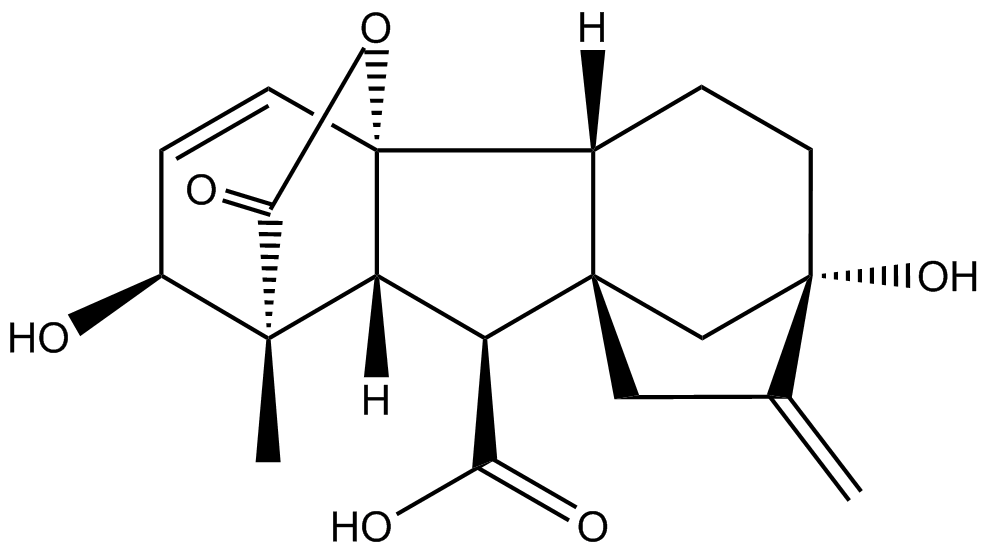 |
Life Technologies (India) Pvt Ltd. 306, Agarwal City Mall, opposite M2K Pitampura, Delhi-110034 (India) Tel # +91-11-4220-8000; 4220-8111; 4220-8222 Fax# +91-11-4220-8444, Mobile# +91-98105-21400, Toll Free# 1800-120-2434 Email# customerservice@lifetechindia.com |
Introduction:
Gibberellic Acid Solution (13 mg/mL) promotes internode elongation & breaks certain dormancies in seeds.
Synonyms: GA3; Gibberellin A3

G362 Gibberellic Acid Solution (13 mg/mL)(13,000 ppm)
| Synonyms: | GA3; Gibberellin A3 |
| CAS: | 77-06-5 |
| Formula: | C19H22O6 |
| Mol. Weight: | 346.41 |
Properties
| Form: | Liquid |
| Appearance: | Colorless to Light Yellow, Clear |
| Application: | Plant Growth Regulator |
| Solubility: | Miscible with Water |
| Typical Working Concentration: | Varies according to application and plant |
| Concentration: | species |
| Storage Temp : | 2 to 8 ˚C |
| Other Notes: | Plant Tissue Culture Tested, Sterile filtered; For Research Use Only |
Application Notes
Gibberellins are known to promote shoot (internode) elongation and break certain dormancies in seeds. They also can induce flowering in some plant species.2
According to the CFIA (Canadian Food Inspection Agency), gibberellic acid can be used in a concentration range from 0.02-0.10% to break seed dormancy. The CFIA (2011) recommends that if a concentration of 0.08% or higher is to be used, the gibberellic acid should be dissolved in a phosphate buffer consisting of the following per liter of water:
1.78 g of Na2HPO4•2H2O or 2.68 g of Na2HPO4•7H2O (Prod. # S745)
1.38 g of NaH2PO4•H2O (Prod # S515)
It has been reported that low concentrations of GAs (0.01-5.0 mg/L) have been shown to promote shoot development in tobacco callus, while higher concentrations (5.0 mg/L to 10 mg/L) inhibit shoot production.4
PhytoTechnology Laboratories® also carries Gibberellic Acid Solution at 1 mg/mL (Prod. No. G198), Gibberellic Acid powder (Prod. No. G500), and Gibberellins A4+A7 (Prod. No. G358).
Please Note: Gibberellins can be co-autoclaved with media components; however, some loss of activity may occur. While PhytoTechnology Laboratories™ tests each lot of this product with two or more plant cell/ tissue culture lines, it is the sole responsibility of the purchaser to determine the appropriateness of this product for the specific plants that are being cultured and applications that are being used.
References
1. Merck 13, 4430
2. Harada H. and J. P. Nitsch (1959) Flower Induction in Japanese Chrysanthemums with Gibberellic Acid. Science , New Series 129;335, pp. 777-778.
3. Canadian Food Inspection Agency (2011) Canadian Methods and Procedures for Testing Seed. www.aosaseed.com/docs/Canadian_M&P_2011.pdf
4. Murashige, T (1961) Suppression of Shoot Formation in Cultured Tobacco Cells by Gibberellic Acid. Science, New Series, 134:3474, pp. 280
